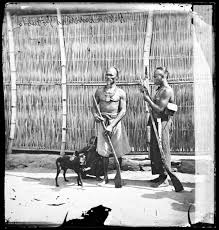As everyone knows, dogs are reliable friends who serve all sorts of roles in human society. New research suggests that hasn’t changed much over the years, as remains recently uncovered suggest that ancient hunters in an area near modern day Jordan may have used dogs to help them hunt small prey.
Science News reports on these new discoveries at the Shubayqa 6 dig site. Dated to be from around 11,500 years ago, bones of canines as well as small prey animals like foxes and rabbits were uncovered in greater numbers within that time period.
Lisa Yeomans, a zooarchaeologist at the University of Copenhagen, made these discoveries with her team last March. Their new discoveries place into question the longstanding belief that dogs were domesticated for the sake of hunting large game in response to food shortages. This, as well as the belief that the food shortages that caused this behavior would have led to farming, are not consistent with these new findings, as no signs of food shortage can be seen at Shubayqa 6.
The scientists also ruled out the possibility that this was merely a coincidental increase in population sizes, as many of the prey’s remains were found to have damage consistent with having been eaten by the dogs in large number. In fact, Yeomans theorizes that the use of dogs to hunt smaller animals may have eliminated the need to hunt large prey entirely, as the efficiency with which the animals seemed to kill prey and the large amount of smaller animals in the area would make high risk hunting endeavors a poor decision on the part of early humans.
To date, 55 canine bones and more than 3,800 mammal bones have been found at the site, though the age and damage of many of the specimens make it hard to identify them as any particular species, especially in the case of dogs. According to experts, these discoveries are some of the best evidence we have of when and how dogs were first domesticated.
At present, the people who are believed to have first used dogs for hunting were the Natufians, though hard evidence is scarce. What is known is that the group at Shubayqa 6 found in the research existed some time after the Natufian people disappeared. If the theory were to be true, it would not be unlikely that the site’s residence from 11,500 years ago learned their dog hunting methods from the Natufians, or were at least inspired by them.



